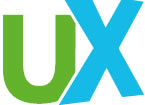The worldwide economy is suffering greatly. Consequently, many corporate, government, educational, and organizational budgets have become diminished. That situation always affects new product development and, with it, the decisions to undertake a variety of usability and user-experience activities—from ethnographic observations, contextual and task analyses, to usability tests, remote testing, and many other usability evaluation and…
This issue of UX explores forms, one of the most ubiquitous but under-noticed areas of usability among technology-oriented interactive communication. Where would we be if we could not log on to our computers or email systems, order products or services, search for data, and compare the results? In some cases, these displays of text, graphics,…
A few years ago, when we needed a book on usable forms to recommend to a client, there was little available. Now there are several, two of which (one our own) are reviewed in this issue. In the course of researching our book, we came across Robert Barnett, the distinguished Australian leader in the world…
The role of seniors have important implications for the policies and focus of attention for our professional organizations and daily life.

This issue explores how transportation impacts culture and society and to examine how people interact with vehicles, infrastructure, technologies, security, and finding their way through an environment.
Remote testing, the special concern of this issue, is increasingly important to usability professionals.
Five years ago, when the term remote testing was brought into a conversation between usability practitioners, everyone knew what it meant. The moderator of a usability test was located in the lab and the participant was not.
One hot topic within the user-experience and usability professions, as UX readers understand it, is how we relate to the worlds of marketing, market research, marketing communications, and branding. Almost all of our sister/brother professions—like industrial/product design, user-interface/interaction design, graphic/visual design, and ethnography/social research—have faced a growing blurring of boundaries of profession-definitions, principles, and techniques.…
At the risk of oversimplifying, most marketing professionals would probably say there is no difference between a vertical market and what usability professionals call a specific user profile or persona. Marketing’s traditional focus is on demographic information supported by large sample sizes. User research, on the other hand, traditionally focuses more on the specific user’s…
This issue of User Experience introduces 2008 with a rich set of articles from a wide range of real-world perspectives. Rick Starbuck, Washington Mutual Bank, USA, shows us how user-centered design achieves bottom-line business success. Jerrod Larson, University of Washington, USA, analyzes why some companies make poor decisions about software usability. Anu Kankainen, Idean, Finland,…
